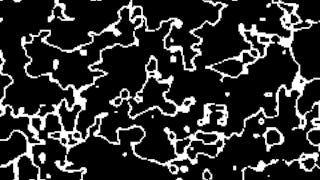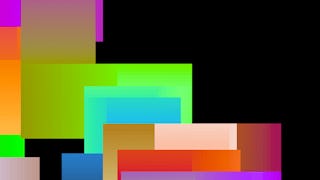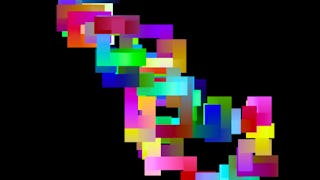Creative Coding for Designers Using Python,marks the final installment in the comprehensive three-course specialization, aimed at significantly enhancing the programming capabilities of designers, artists, and visual thinkers through Python. As the advanced course in the series, Creative Coding for Designers Using Python adopts a project-based learning strategy to consolidate and apply the skills acquired from the first two courses. In this course, you’ll focus on dynamic simulations and procedural content generation, offering a deeper dive into Python's application in visual design and digital art. Designed for individuals who have grasped the basics of Python, including its syntax, data structures, and object-oriented programming principles, this course delves into sophisticated topics. Leveraging the Processing platform with Python, you’ll engage in interactive projects that transform theoretical knowledge into tangible outputs, bridging the gap between technical proficiency and artistic creativity.


Creative Coding for Designers Using Python
本课程是 Programming for Designers 专项课程 的一部分

位教师:Jose Sanchez
包含在  中
中
您将学到什么
Create particle systems in Python to form dynamic visual patterns
Create vector fields in Processing using indexes and Perlin Noise remapping to create flowing patterns
Apply algorithms to perform procedural generation to craft intricate tile-based patterns with customizable textures
您将获得的技能
要了解的详细信息

添加到您的领英档案
15 项作业
了解顶级公司的员工如何掌握热门技能

积累特定领域的专业知识
- 向行业专家学习新概念
- 获得对主题或工具的基础理解
- 通过实践项目培养工作相关技能
- 获得可共享的职业证书

该课程共有5个模块
Our first project introduces particle systems, a fundamental concept in simulation and visual effects that can create complex and dynamic patterns from simple rules. Through a series of videos, we'll cover the creation of particles, their behaviors, and how to control and animate them to produce complex visual effects. This week sets the foundation for understanding how individual elements can work together to create intricate designs.
涵盖的内容
13个视频7篇阅读材料3个作业1个应用程序项目1个讨论话题
Building on our knowledge of particle systems, week two explores vector fields and their application in guiding the movement of particles. You'll learn how to create vector fields and use them to influence the navigation and behavior of particles within a system. This week enhances our ability to simulate natural phenomena and create dynamic, flowing patterns in our designs.
涵盖的内容
10个视频3篇阅读材料3个作业1个应用程序项目
In our third project, we dive into ecosystem simulations, a complex and fascinating application of creative coding that models interactions within ecosystems. You'll learn how to simulate different entities within an ecosystem and their interactions, such as predation and reproduction. This week challenges us to think about systems, their rules, and how to represent them visually in engaging ways.
涵盖的内容
10个视频2篇阅读材料3个作业1个应用程序项目
Pathfinding is crucial in many design and gaming applications, allowing objects to navigate through environments in an intelligent manner. This week, we focus on the A-Star (A*) algorithm, a popular pathfinding algorithm known for its efficiency and accuracy. You'll learn how to implement A* to enable characters or objects to find the shortest path between two points, overcoming obstacles and optimizing movement within your projects.
涵盖的内容
10个视频2篇阅读材料3个作业1个应用程序项目
Our final project explores the wave function collapse algorithm, an advanced technique for procedural generation that's particularly useful in tile-based generative design. You'll learn how to implement this algorithm to create complex patterns and landscapes, offering a powerful tool for architectural design, game development, and digital art. This week culminates our exploration, showcasing how algorithms can inspire creativity and innovation in design.
涵盖的内容
11个视频3篇阅读材料3个作业1个应用程序项目
获得职业证书
将此证书添加到您的 LinkedIn 个人资料、简历或履历中。在社交媒体和绩效考核中分享。
位教师

从 Design and Product 浏览更多内容
 状态:免费试用
状态:免费试用University of Michigan
 状态:免费试用
状态:免费试用University of Michigan
 状态:免费试用
状态:免费试用University of Michigan
 状态:免费试用
状态:免费试用University of Michigan
人们为什么选择 Coursera 来帮助自己实现职业发展




常见问题
To access the course materials, assignments and to earn a Certificate, you will need to purchase the Certificate experience when you enroll in a course. You can try a Free Trial instead, or apply for Financial Aid. The course may offer 'Full Course, No Certificate' instead. This option lets you see all course materials, submit required assessments, and get a final grade. This also means that you will not be able to purchase a Certificate experience.
When you enroll in the course, you get access to all of the courses in the Specialization, and you earn a certificate when you complete the work. Your electronic Certificate will be added to your Accomplishments page - from there, you can print your Certificate or add it to your LinkedIn profile.
Yes. In select learning programs, you can apply for financial aid or a scholarship if you can’t afford the enrollment fee. If fin aid or scholarship is available for your learning program selection, you’ll find a link to apply on the description page.
更多问题
提供助学金,



